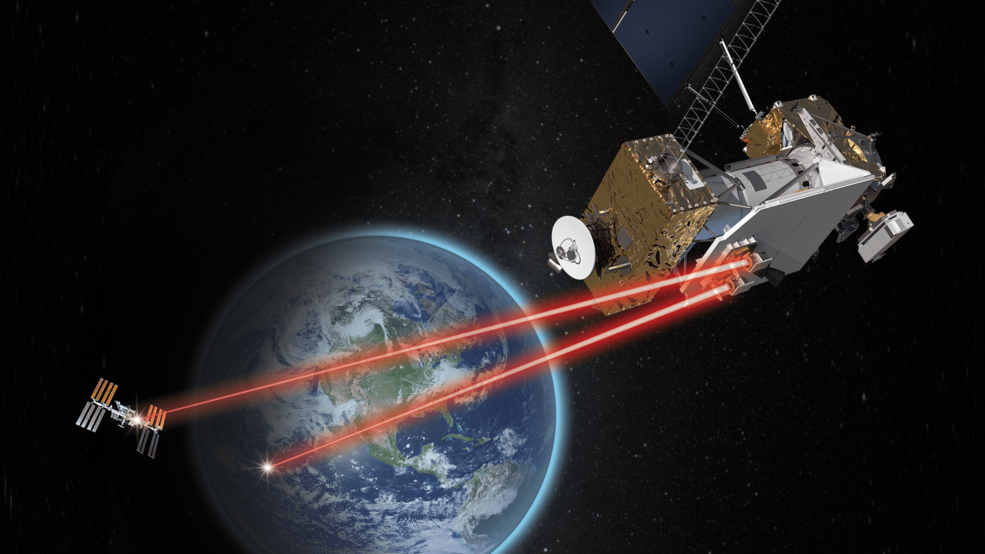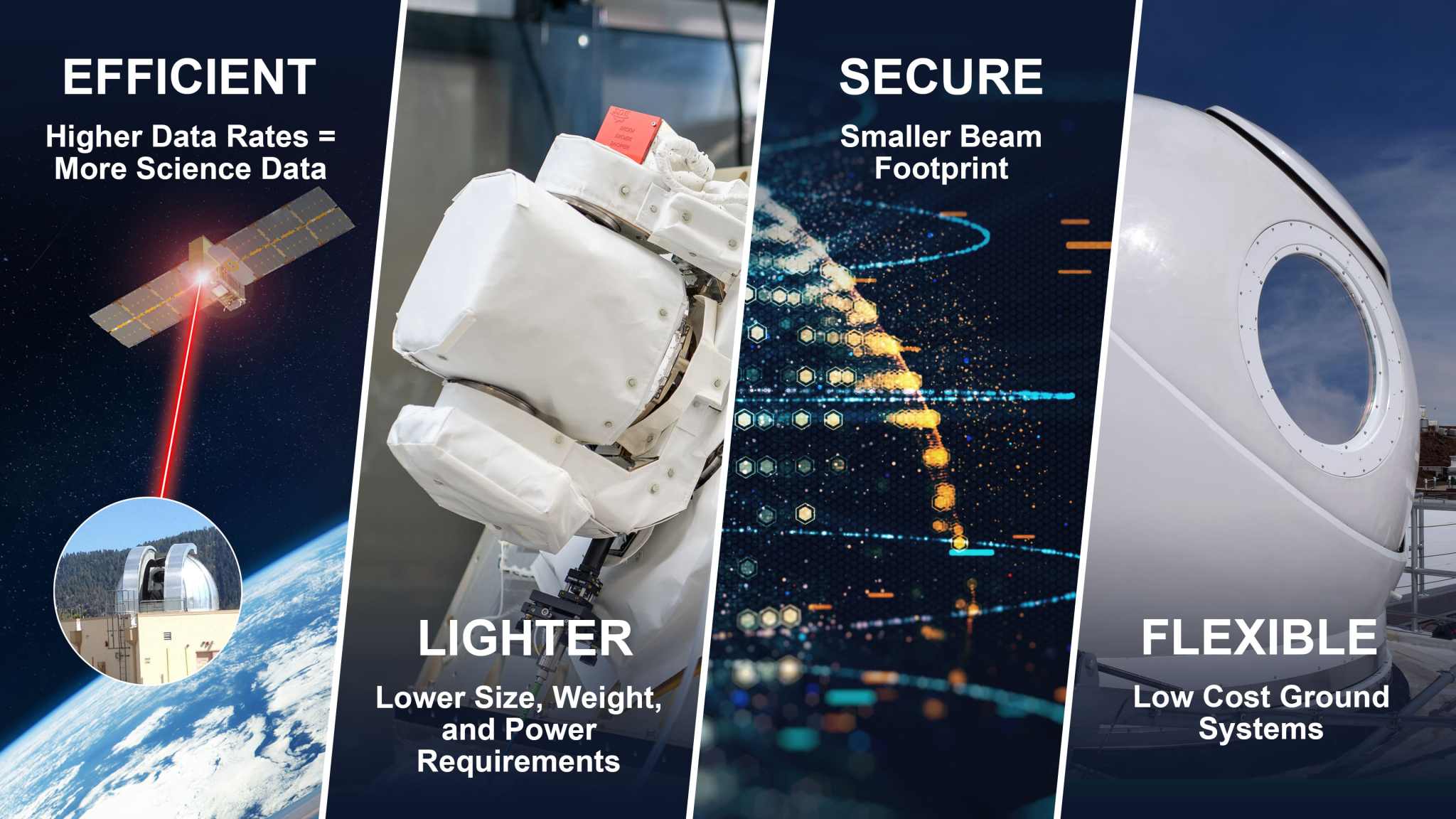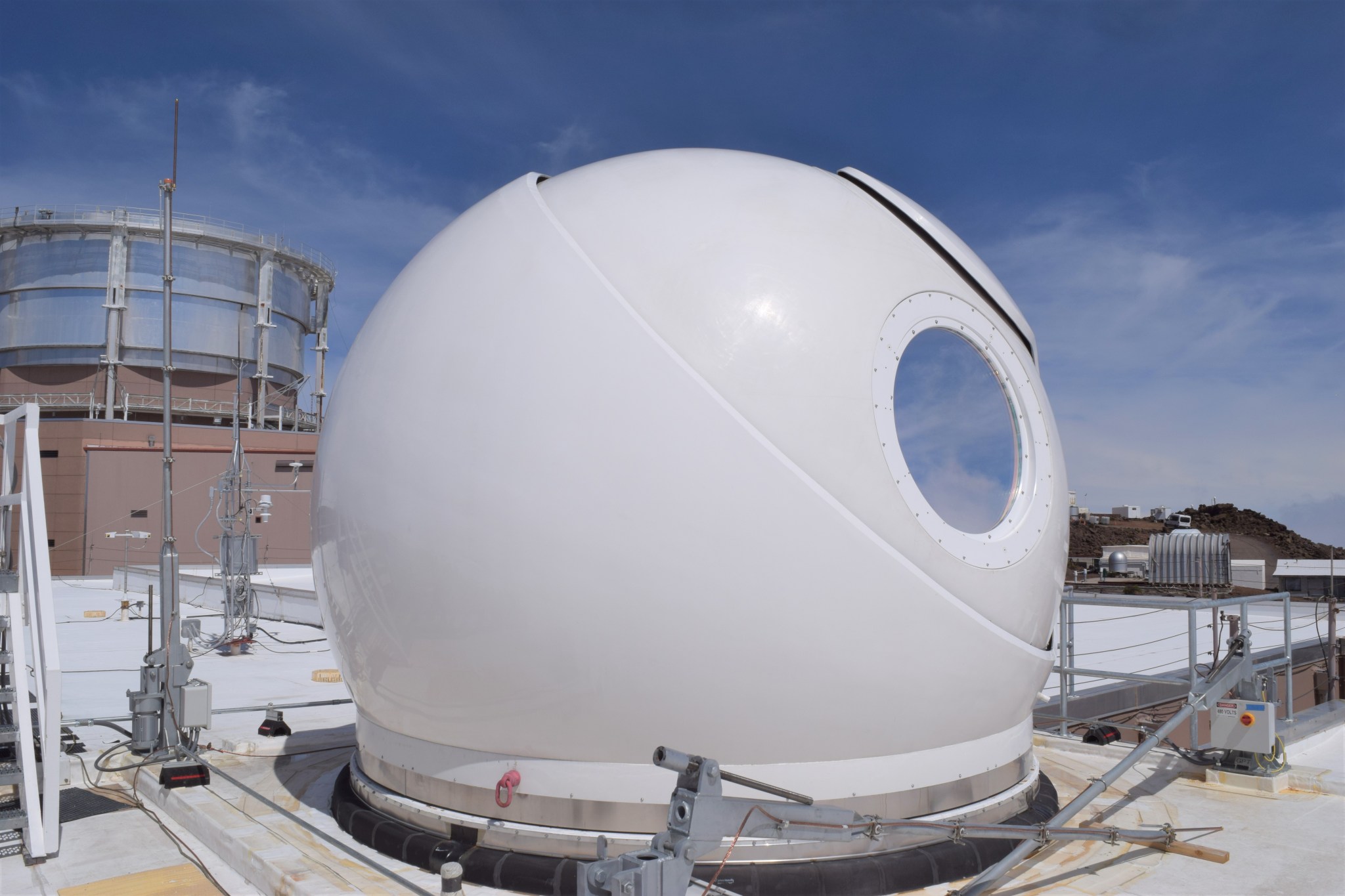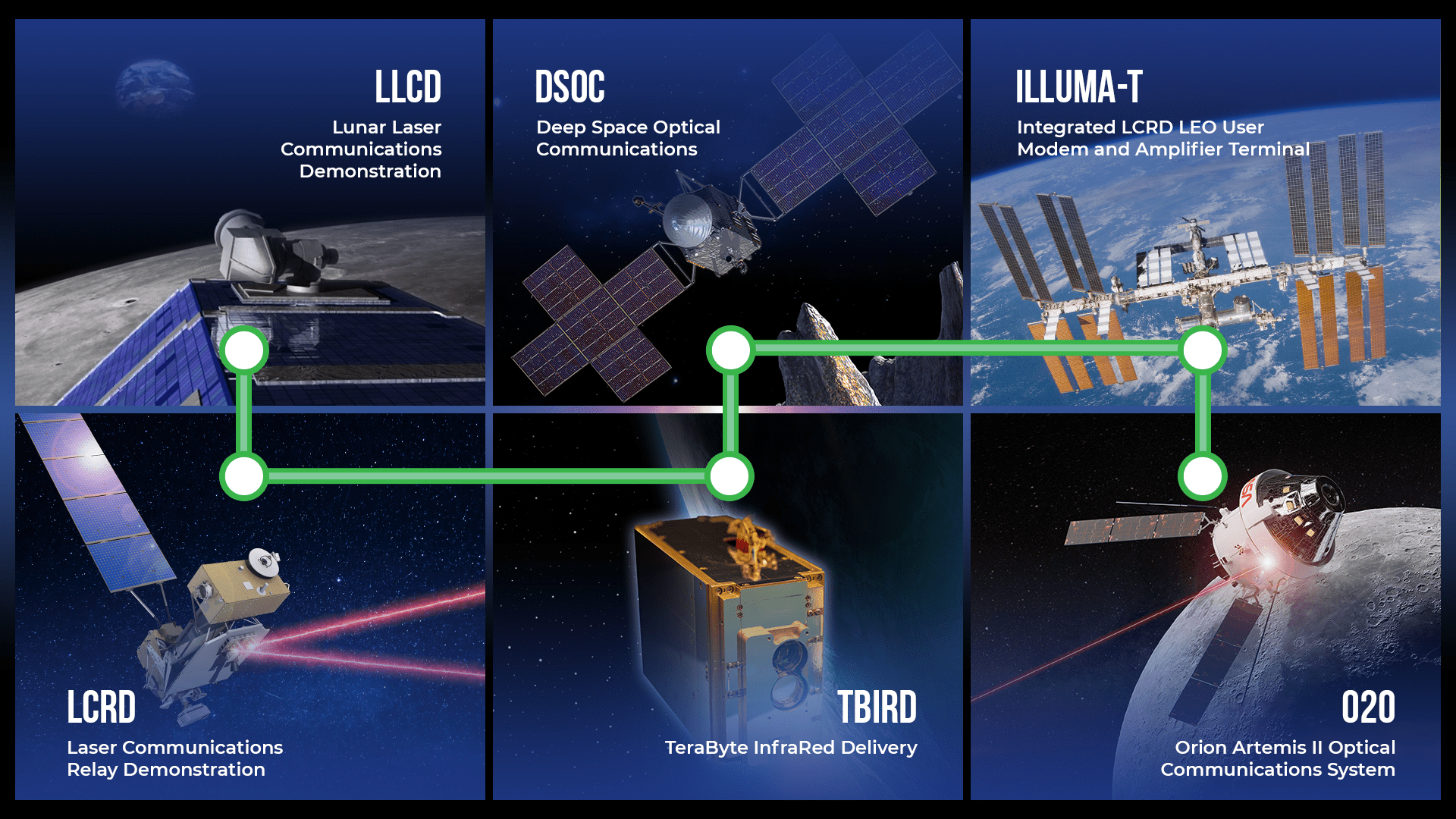NASA’s first two-way laser relay system completed its first year of experiments on June 28 – a milestone for a game-changing technology that could be the future for sending and receiving data from space.
The Laser Communications Relay Demonstration (LCRD) uses infrared light, or invisible lasers, to transmit and receive signals rather than radio wave systems conventionally used on spacecraft. Infrared light’s tight wavelengths allow space missions to pack significantly more data – 10 to 100 times more – into a single transmission. More data means more discoveries.
Now, at the halfway point in its experimentation phase, LCRD has shown laser communications’ significant advantages over traditional radio wave systems.
Located in geosynchronous orbit 22,000 miles above Earth, LCRD is currently acting as an experiment platform for NASA, other government agencies, academia, and commercial companies to test laser communications capabilities. After its experiment phase, there is an opportunity for the mission to become an operational relay. This would mean that future missions using laser communications would not need a clear line of sight to Earth and would simply send their data to LCRD, which would then beam it down to Earth.
LCRD, and laser communications in general, was born out of a need for more efficient data transmission to and from space. LCRD was launched to test and refine this technology through a partnership between NASA’s Space Communications and Navigation (SCaN) program and NASA’s Space Technology Mission Directorate.
“So far, we’ve published first papers about early findings from the experiments, but we plan to publish more lessons learned so that the aerospace industry can learn from this technology demonstration alongside NASA,” said Dave Israel, LCRD’s principal investigator at NASA’s Goddard Space Flight Center in Greenbelt, Maryland. “Early results have been outstanding, and seeing massive amounts of data come down in a fraction of the time is truly extraordinary.”
Some of these experiments include studying atmospheric impact on laser signals. While laser communications can normally provide increased data rates, humidity, clouds, heavy winds, and other atmospheric disturbances can disrupt laser signals as they enter Earth’s atmosphere.
“One of the things that surprised us was how weather affected experiment operations. We typically build our ground stations in remote, high-altitude locations with clear weather conditions – LCRD’s are in Hawaii and California,” said Rick Butler, LCRD experiments manager at Goddard. “The historic rain and snowfall in Southern California this year provided us an opportunity to really understand the impacts of weather on signal availability. This also reinforced our understanding that more ground stations mean more options for signal availability.”
Additionally, the weather experiment allowed engineers to enhance NASA’s adaptive optics systems, which are integrated into the ground stations and use a sensor to measure and correct distortion on the signal that’s coming down from the spacecraft.
Another experiment was conducted with the Aerospace Corporation, who built an LCRD-compatible terminal to send and receive data with LCRD. This experiment confirmed LCRD’s ability to work with external users.
Engineers also used LCRD as an opportunity to test networking capabilities like delay/disruption tolerant networking (DTN) over laser links. DTN empowers missions with unparalleled connectivity by storing and forwarding data at points along a network to ensure critical information reaches its destination.
Laser communications systems also can enable more precise navigation capabilities. An ongoing navigation experiment has shown engineers can receive more precise location data over a laser link than over standard radio waves. This means that the laser communications system can also serve as a platform for improved timing and location data — a critical part of GPS.
“Technology demonstrations like LCRD allow NASA and its partners to implement new capabilities and test them in an operational scenario,” said Trudy Kortes, director of technology demonstrations in NASA’s Space Technology Mission Directorate at the agency’s headquarters in Washington. “This enables engineers to really get a feel for a technology’s potential and see what future applications could look like. It’s why testing operations in a relevant environment is so critical.”
With systems like LCRD proving the capabilities of laser communications, future science and human exploration missions that adopt the technology could be capable of transmitting more data back to Earth. As science missions’ instrumentation advances and gathers more data, the onboard communications systems must also evolve to transmit this data to researchers. Payloads like LCRD are showing how laser communications systems can benefit space missions and help them achieve their science objectives.
LCRD is one of a series of missions to demonstrate laser communications technology. The agency is continuing its infusion efforts with future terminals going on the International Space Station, the Artemis II Orion spacecraft that will travel around the Moon, and the Deep Space Optical Communications experiment aboard the Psyche spacecraft, which will test laser communications farther from Earth than ever before as Psyche makes its way to its asteroid destination in deep space.
With a year of successful experimentation completed, the LCRD team is now prepping for the late 2023 launch of NASA’s Integrated LCRD Low-Earth Orbit User Modem and Amplifier Terminal, or ILLUMA-T. Once on the space station, ILLUMA-T will send experiment data to LCRD, which will then relay it to the ground. This will allow NASA to test low Earth orbit to geosynchronous orbit laser communications and showcase the benefit of LCRD’s relay capabilities.
NASA is infusing laser communications technologies to provide missions with enhanced communications capabilities. Lasers communications enable missions to send back more data in a single link. More data means more discoveries.Credits: NASA
LCRD is a NASA payload aboard the Department of Defense’s Space Test Program Satellite-6 (STPSat-6). STPSat-6, part of the Space Test Program 3 (STP-3) mission, launched on a United Launch Alliance Atlas V 551 rocket from the Cape Canaveral Space Force Station in Florida. NASA is operating STPSat-6 for the Department of Defense.
LCRD is led by Goddard and in partnership with NASA’s Jet Propulsion Laboratory in Southern California and the MIT Lincoln Laboratory. LCRD is funded through NASA’s Technology Demonstration Missions program, part of the Space Technology Mission Directorate, and the Space Communications and Navigation (SCaN) program at NASA Headquarters.
By Katherine Schauer NASA’s Goddard Space Flight Center, Greenbelt, Md.
Banner Image: An artistic visualization of NASA’s Laser Communications Relay Demonstration communicating over laser links.
































